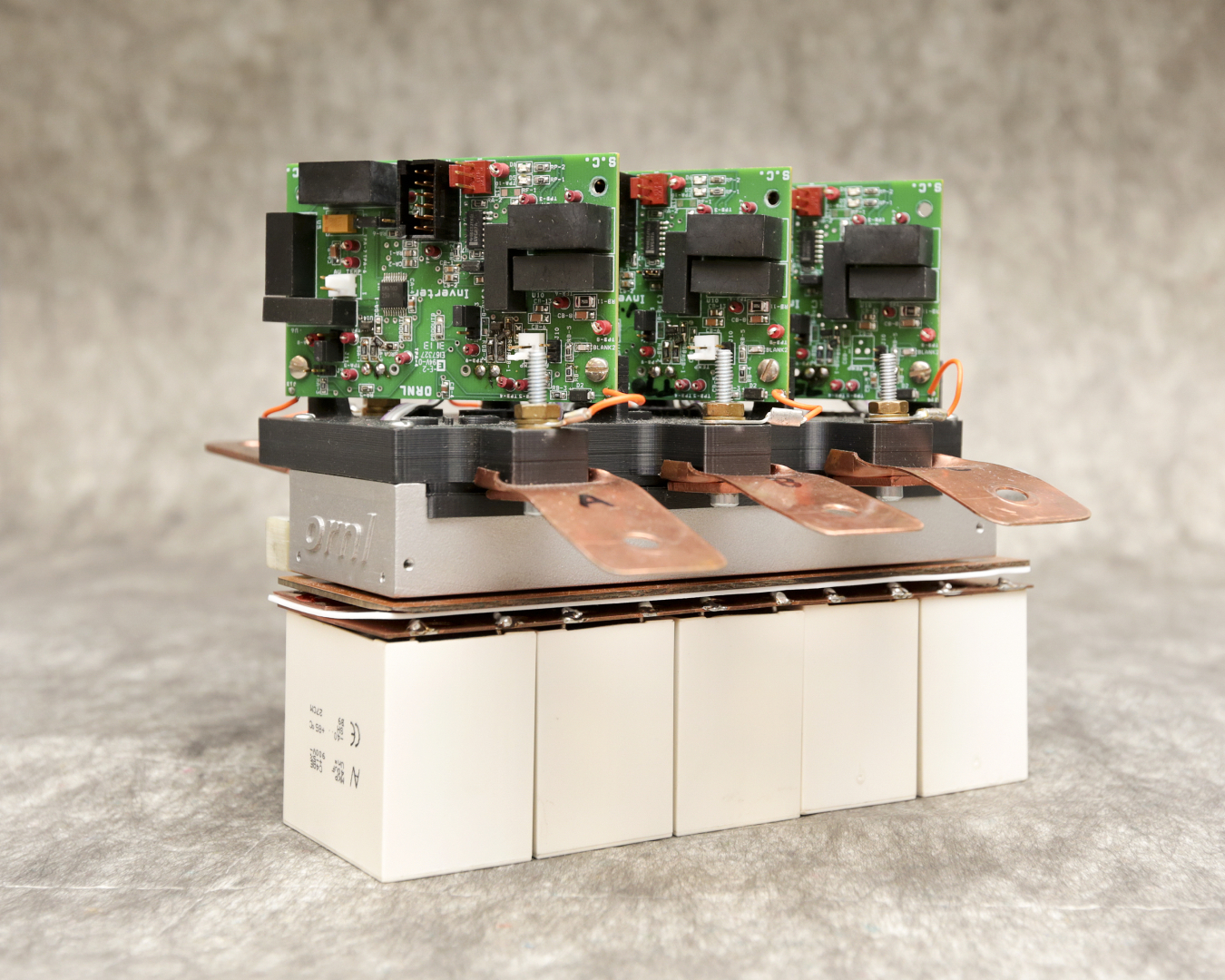EERE Success Story—Novel 3-D Printed Inverters for Electric Vehicles Can Improve EV Power and Efficiency
April 28, 2015
3-D Printed Inverter
Plug-in electric vehicle technologies are on their way to being even lighter, more powerful and more efficient with the advent of power inverters created by 3-D printing and novel semiconductors.
With $1.45 million in funding support from the EERE Vehicle Technologies Office in collaboration with the Advanced Manufacturing Office's Manufacturing Demonstration Facility, Oak Ridge National Laboratory has 3-D printed novel, aluminum-based heat exchangers and power device packages with integrated cooling. The first-of-its-kind liquid-cooled, all-silicon carbide traction drive inverter features 50% 3-D printed parts. It also incorporates wide bandgap materials, which enable devices to perform more efficiently and at higher temperatures than standard semiconductor materials currently used in plug-in electric vehicles.
Researchers successfully operated the inverter at 20 kW with an efficiency of 98.7%. Building on successful evaluations of this first prototype, researchers are now working on an inverter with an even greater percentage of 3-D printed parts, that would make it half the size of inverters in commercially available vehicles. Researchers expect this new inverter’s projected power density to surpass DOE technical targets, and even envision an inverter with four times the power density of the prototype. In addition to the improvements to the inverter itself, 3-D printing uses less energy compared to conventional manufacturing, making the manufacturing of the part more efficient and potentially less expensive, as well.
The EV Everywhere Grand Challenge focuses on the U.S. becoming the first nation in the world to produce plug-in electric vehicles that are as affordable for the average American family as today's gasoline-powered vehicles by 2022. The Vehicle Technologies Office (VTO) develops and deploys efficient and environmentally friendly highway transportation technologies that will enable America to use less petroleum. These technologies will provide Americans with greater freedom of mobility and energy security, while lowering costs and reducing impacts on the environment.
The Office of Energy Efficiency and Renewable Energy (EERE) success stories highlight the positive impact of its work with businesses, industry partners, universities, research labs, and other entities.

